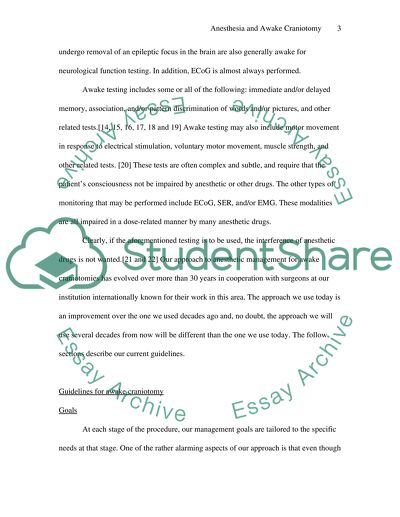Anesthesia and Awake Craniotomy Essay Example | Topics and Well Written Essays - 5000 words. Retrieved from https://studentshare.org/miscellaneous/1507616-anesthesia-and-awake-craniotomy
Anesthesia and Awake Craniotomy Essay Example | Topics and Well Written Essays - 5000 Words. https://studentshare.org/miscellaneous/1507616-anesthesia-and-awake-craniotomy.


